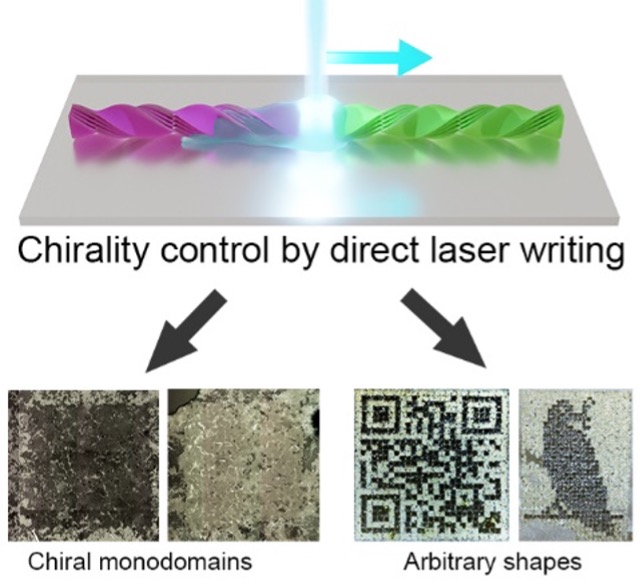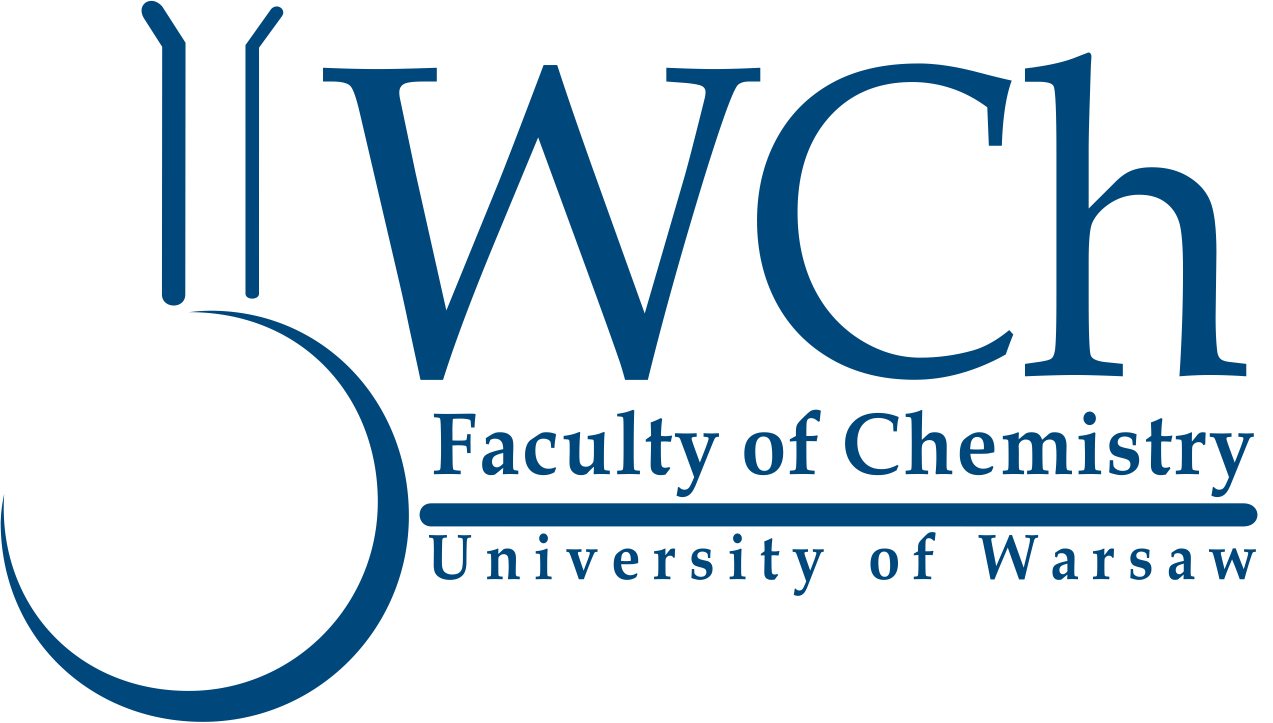Article in Advanced Materials (2023)
16 11 2023
The publication titled “Unrestricted Chiral Patterning by Laser Writing in Liquid Crystalline and Plasmonic Nanocomposite Thin Films” by Piotr Szustakiewicz, Filip Powała, Dorota Szepke, Wiktor Lewandowski, and Paweł Majewski has been released in the prestigious journal Advanced Materials by Wiley publishers.
The article is the result of collaboration between the research groups of Dr. Wiktor Lewandowski and Dr. Paweł Majewski.
Researchers from our department have developed a method for obtaining thin films of materials where chirality is selectively and arbitrarily determined.
Chiral objects are those that are not identical to their mirror images (e.g., right- and left-handed helices). The phenomenon of chirality is extremely important in medicine, architecture, and photonic technologies related to light (e.g., displays, data transfer). The development of the latter is somewhat limited due to the determination of material chirality during their synthesis. This means that almost all materials for photonic applications exhibit a single-handedness.
The method developed at our department involves using thin films of liquid crystalline material, which is constitutionally achiral but possesses optical activity associated with adopting a chiral conformation and helical spatial organization of molecules in the solid state. Typically, the process of helix formation occurs spontaneously and randomly. The developed method involves photothermal determination of chiral patterns by local laser melting of the material, allowing for the creation of micro- and macroscopic areas with a chosen helical
handedness and consequently enabling the creation of patterns visible only using circularly polarized light. This method can be used for example to apply markers invisible to the naked eye to secure valuable documents against forgery.
The project was funded by grants from the National Science Center Sonata Bis (UMO-2020/38/E/ST5/00328) and Opus (UMO-2019/35/B/ST5/04488).
Link to the publication:
https://onlinelibrary.wiley.com/doi/10.1002/adma.202310197

